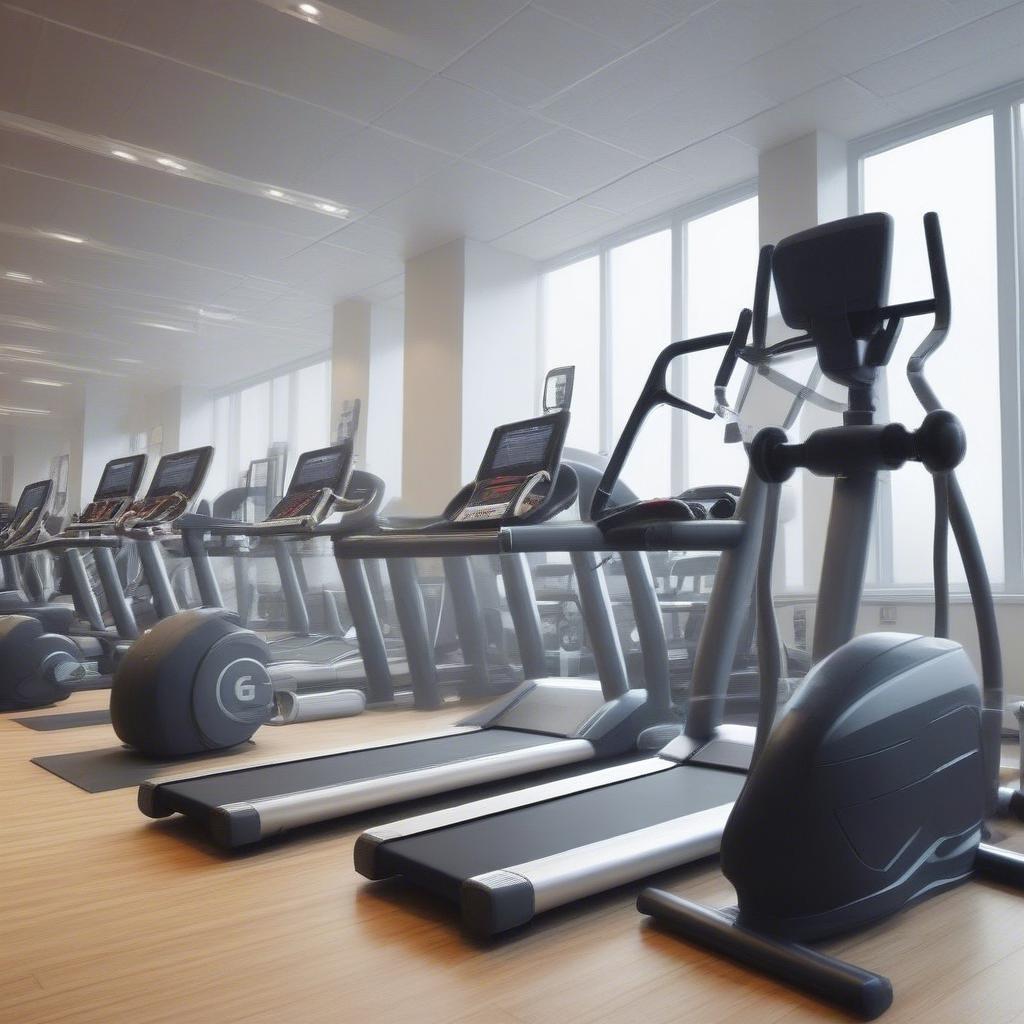
Running a gym is more than just helping people reach their fitness goals; it’s about creating a safe and supportive environment. But behind the treadmills and weights lies a world of potential risks. That’s where the right gym insurance comes in, acting as your safety net against the unexpected. This comprehensive guide will explore the essential insurance coverage every gym needs, ensuring you can focus on growing your business and serving your members, rather than worrying about financial setbacks.
Why is Gym Insurance Essential?
Before we dive into specific types of coverage, let’s understand why gym insurance is absolutely crucial. It’s not just a formality; it’s a critical component of business protection that shields you from various financial and legal liabilities. Without adequate coverage, a single incident could lead to devastating financial losses, even forcing you to close your doors.
Understanding the Risks
Gyms, by their very nature, involve physical activity and equipment usage, which inevitably exposes them to numerous risks. Here are some key risk areas:
- Member Injuries: Accidents happen. A member might slip on a wet floor, drop a weight on their foot, or suffer an injury during a class. These incidents can lead to lawsuits and hefty medical bills.
- Equipment Malfunctions: Machines break down. If a faulty piece of equipment causes an injury, you could be held liable.
- Property Damage: Whether it’s a fire, a flood, or theft, your gym’s physical property is always at risk.
- Professional Liability: If your trainers give incorrect advice or fail to meet their professional responsibilities, you could be sued for negligence.
- Data Breaches: In today’s digital age, protecting your members’ personal information is paramount. Data breaches can lead to significant financial and reputational damage.
- Employee-related Issues: Injuries to employees or issues related to their hiring, termination, or discrimination cases could expose your business to claims.
The Financial Impact of Uninsured Risks
Consider these scenarios:
- Scenario 1: A member suffers a severe injury during a spin class and sues your gym for negligence. Without liability insurance, you could face legal fees, settlement costs, and potential judgments, easily exceeding thousands of dollars.
- Scenario 2: A fire damages your equipment and facility. Without property insurance, you’d have to absorb the costs of repairing the building and replacing the expensive machines, likely leading to financial ruin.
- Scenario 3: A data breach compromises the sensitive information of your members. The costs of notification, fines, and legal battles could be crippling without cyber insurance.
In each of these cases, the lack of proper gym insurance could mean the difference between surviving a setback and shutting down. It’s about mitigating financial disasters and protecting your business investment.
Key Insurance Coverages for Gyms
Now that you understand the ‘why,’ let’s delve into the ‘what.’ Here are the essential insurance policies your gym needs:
1. General Liability Insurance
What it is: General liability insurance is the cornerstone of any business protection plan. It covers common risks like bodily injury, property damage, and associated legal fees.
Why you need it: This type of insurance protects you from claims arising from accidents on your premises or from your business operations. For example, if a member slips on a wet floor and breaks an arm, your general liability insurance would cover their medical bills and your legal defense costs, up to your policy limits.
How it works:
- Covers bodily injury and property damage to third parties (not employees).
- Covers legal fees and settlement costs.
- Can include coverage for advertising injury (e.g., defamation).
Example: A client injures their back lifting weights and sues. Your general liability policy covers the legal costs and a portion of the settlement.
Actionable Steps:
- Obtain a quote for general liability insurance.
- Ensure your policy limits adequately cover your potential exposure.
- Review the policy’s terms and exclusions to fully understand your coverage.
2. Professional Liability Insurance (Errors & Omissions Insurance)
What it is: This type of insurance protects you against claims of professional negligence or failure to provide proper services. Also known as Errors & Omissions (E&O) insurance, it specifically covers instances when a client believes you provided inadequate advice, training, or coaching.
Why you need it: In the fitness industry, where trainers are giving advice, creating workout plans, and even nutrition guidance, the risk of a negligence claim is a real concern. If a trainer gives inaccurate advice that leads to injury or negative health consequences, your professional liability insurance will protect you from the associated financial burden.
How it works:
- Covers claims of negligence, mistakes, and inadequate professional service.
- Covers legal fees, settlements, and court judgements arising from those claims.
- Essential for gyms providing personal training, nutritional advice, or other fitness-related consulting.
Example: A personal trainer creates an intensive workout plan for a client who suffers a severe muscle strain. If the client sues, professional liability would help to cover costs.
Actionable Steps:
- Assess your business practices to identify areas where liability might be a concern.
- Choose a professional liability policy that matches your service offerings.
- Ensure all trainers are aware of best practices to minimize liability claims.
3. Workers’ Compensation Insurance
What it is: Workers’ compensation insurance provides benefits to employees who suffer work-related injuries or illnesses.
Why you need it: This coverage is often legally required and it’s essential for business protection. It covers medical expenses, lost wages, and rehabilitation costs for employees injured while performing their job duties, regardless of fault.
How it works:
- Covers medical expenses, lost wages, and rehabilitation costs of injured employees.
- Offers legal protection for employers in case of employee lawsuits.
- Some states require employers to carry this coverage, regardless of size.
Example: An employee strains their back while assisting with equipment movement. Workers’ compensation covers their doctor’s bills and a portion of lost income during their recovery.
Actionable Steps:
- Consult your state requirements for workers’ compensation insurance.
- Determine appropriate coverage levels based on the number of employees.
- Implement safety programs to reduce the risk of workplace accidents.
4. Property Insurance
What it is: This insurance covers physical damage to your gym’s property due to covered perils (fire, theft, vandalism, natural disasters).
Why you need it: Imagine the financial loss if your equipment, building, and all other business properties are destroyed in a fire. Without property insurance, you’d bear the entire cost of replacing these assets.
How it works:
- Covers damage to your building, equipment, fixtures, and inventory.
- Typically covers perils like fire, windstorms, hail, vandalism, and theft.
- Can also include business interruption coverage, which helps cover lost income when damage to property prevents business operation.
Example: A flood damages your cardio equipment. Property insurance helps cover the costs of replacement or repair.
Actionable Steps:
- Take a detailed inventory of all assets and calculate their replacement cost.
- Obtain a property insurance quote and ensure coverage is adequate.
- Explore business interruption insurance, especially if your business relies heavily on foot traffic.
5. Cyber Liability Insurance
What it is: This coverage protects your gym from financial losses arising from cyber attacks and data breaches.
Why you need it: Modern gyms collect personal data from their members (names, addresses, payment details). A data breach could expose that information to hackers and result in lawsuits, fines, and reputational damage.
How it works:
- Covers data breach response costs, legal fees, and fines.
- May include coverage for identity theft protection services for affected individuals.
- Helps pay for the costs of repairing data systems.
Example: A hacker gains access to your customer database and steals credit card information. Cyber insurance helps cover the cost of notification, credit monitoring, and potential legal fees.
Actionable Steps:
- Assess your cyber vulnerabilities and implement preventative measures.
- Secure quotes for cyber liability insurance to protect sensitive data.
- Develop a data breach response plan for your gym.
6. Commercial Auto Insurance
What it is: Commercial auto insurance covers any vehicles used for business purposes.
Why you need it: If you use vehicles to transport equipment, market, or do anything else related to the business, your personal auto policy may not cover you. Commercial auto insurance provides necessary business protection.
How it works:
- Provides coverage for vehicles owned, leased, or hired for business use.
- Covers bodily injury and property damage caused by accidents with business vehicles.
- Offers physical damage coverage for your vehicles.
Example: You use a branded vehicle to pick up new gym equipment and are involved in an accident. Commercial auto insurance will cover damages to the vehicle and other parties involved.
Actionable Steps:
- Identify all vehicles used for business purposes.
- Get a commercial auto insurance quote for all your vehicles.
- Make sure policy coverage matches the needs of your transportation.
Fitness Risk Management Strategies
Insurance is essential, but it is not the complete solution. It’s crucial to actively manage risks to prevent claims in the first place. Here are some fitness risk management strategies your gym can implement:
1. Member Safety Protocols
- Regular Equipment Maintenance: Establish a schedule for regular inspection and maintenance of all equipment. Fix problems immediately.
- Safety Orientations: Provide comprehensive orientations to new members on how to use equipment and what is expected of them.
- Qualified Trainers: Only hire certified and experienced trainers with proper credentials.
- Clear Signage: Post clear and visible safety rules and warnings around the gym.
- First-Aid Kits and Training: Ensure your staff is trained in first aid and CPR, and have readily available first-aid supplies.
- Emergency Procedures: Develop and regularly practice emergency procedures for various incidents.
2. Documentation and Record-Keeping
- Waivers and Release Forms: Make sure all members sign liability waivers and release forms.
- Accident Reports: Maintain detailed records of all accidents and incidents, and record actions taken.
- Staff Training Records: Keep records of certifications, training, and qualifications of all trainers and staff members.
- Maintenance Logs: Maintain comprehensive logs for all equipment maintenance and repairs.
3. Staff Training and Communication
- Risk Awareness Training: Train staff on identifying and addressing potential risks in the gym.
- Clear Communication: Encourage clear communication amongst staff and members, to report issues quickly.
- Emergency Contact Information: Have clear protocols and contact lists for use in emergencies.
4. Facility Maintenance
- Regular Cleaning: Maintain a clean and hygienic environment in the gym, especially high traffic areas.
- Slip-Resistant Flooring: Use slip-resistant flooring in wet areas.
- Adequate Lighting: Make sure all areas of the gym are properly lit, including stairwells.
- Regular Inspections: Schedule regular inspections of the gym to identify any hazards or necessary repairs.
Choosing the Right Insurance Provider
Selecting the right insurance provider is as vital as selecting the correct coverage. Here’s how to approach that decision:
- Research and Compare Quotes: Don’t settle for the first quote you receive. Shop around and compare quotes from multiple insurance providers specializing in gym insurance.
- Assess Reputation and Stability: Choose an established insurer with a good reputation and strong financial stability.
- Read Reviews: Check online reviews and testimonials to gauge customer satisfaction and claims processing efficiency.
- Seek Recommendations: Talk to other gym owners and fitness industry professionals for recommendations.
- Understand Policy Details: Make sure you fully understand the terms and conditions of the policy.
- Ensure Adequate Coverage: Make sure your policy limits are sufficient to protect your business from potential losses.
- Consider a Broker: Working with an independent insurance broker specializing in the fitness industry can be advantageous. Brokers can offer insights, access multiple carriers, and find solutions best suited to your needs.
Learn Business: Your Partner in Gym Success
Running a gym involves juggling numerous responsibilities, from crafting engaging workouts to ensuring proper business protection. That’s where Learn Business comes in. We understand the unique challenges that gym owners face, and we’re here to help.
How Learn Business Supports Gym Owners
- Tailored Templates: We provide a comprehensive range of customizable templates specifically designed for the fitness industry. These include liability waivers, equipment maintenance logs, incident report forms, staff training schedules, and financial templates. These tools help you create professional documents, manage risk, and stay organized.
- Guidance and Resources: We provide expert guidance on fitness risk management, insurance requirements, and legal considerations. This includes articles, blog posts, videos, and downloadable resources.
- Business Planning: We support gym owners in developing and executing effective business plans. Our planning templates cover aspects like operations, marketing, financials, and risk assessments.
- Operational Excellence: Learn Business resources help streamline operations, ensure compliance, and improve efficiency, allowing gym owners to focus on growing their business.
- Community: Our community allows gym owners to connect, share experiences, and support one another.
Maximizing Your Potential with Learn Business
- Risk Reduction: Leverage our forms and templates to identify and mitigate risks proactively, reducing the possibility of claims.
- Time Efficiency: Save valuable time and resources by utilizing our ready-made templates.
- Legal Compliance: With our guidance, ensure your operations comply with relevant laws and regulations, protecting you from liability issues.
- Financial Management: Gain insights into your financial performance using templates and guidance to help you budget, track income, and manage expenses effectively.
- Strategic Planning: Use our business planning templates to map out your business goals and devise strategies for reaching them, supporting business growth.
Learn Business is more than just a collection of resources; it’s a partner dedicated to the success of your gym. Whether you’re just starting or looking to scale your existing business, we offer the tools and expertise you need to thrive in a competitive marketplace.
Conclusion
Protecting your gym with the right gym insurance is not just a business expense; it’s an investment in its future. By understanding the potential risks, securing appropriate coverage, and implementing proactive risk management strategies, you can safeguard your financial well-being and build a thriving, sustainable fitness business. Remember to research thoroughly, compare your options, and choose a provider that understands the unique needs of the fitness industry. And with the resources and support offered by Learn Business, you can confidently move forward, knowing you’re prepared for whatever may come your way. This comprehensive approach provides business protection, peace of mind, and the freedom to concentrate on what you love most – helping people achieve their fitness aspirations.



Leave a Reply